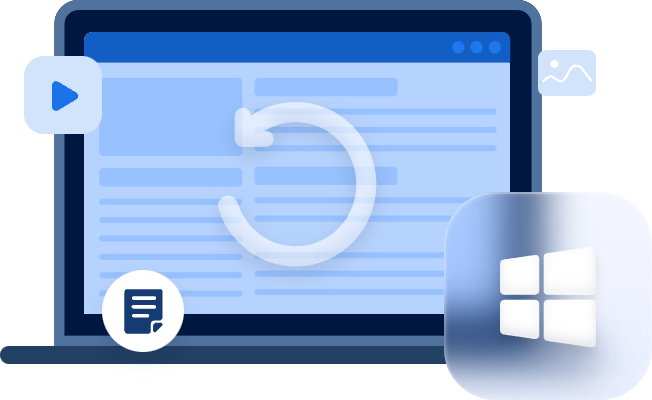Unleashing the Power of MyRecover: Remove Shortcut Virus Without Formatting
Dive into the world of shortcut virus removal without losing data. This guide provides detailed steps and explores the use of MyRecover for a smooth recovery process. From in-depth procedures to advanced tools, this guide ensures a comprehensive approach to virus removal.
Dealing with a shortcut virus can be a frustrating experience, but the good news is that you don't have to sacrifice your data or go through the hassle of formatting. In this guide, we'll explore effective methods to remove shortcut viruses without losing data. From traditional approaches to the advanced capabilities of MyRecover, we've got you covered. Let's embark on the journey of virus removal while safeguarding your valuable data.
Remove Shortcut Virus Without Formatting: Breaking it Down
Removing a shortcut virus without losing data requires a strategic approach. Here, we provide detailed steps on how to achieve this, ensuring your files stay intact throughout the process.
1. Scan and Remove with Antivirus Software
Using reliable antivirus software is the first line of defense against shortcut viruses. Follow these steps:
- Ensure your antivirus software is updated to the latest version.
- Perform a full system scan to identify and remove the shortcut virus.
- Quarantine or delete the infected files as recommended by the antivirus software.
2. Show Hidden Files and Folders
Shortcut viruses often hide files and folders. Uncover them with these steps:
- Open File Explorer and navigate to the folder containing the shortcut virus.
- Click on the "View" tab and check the "Hidden items" box.
- Look for suspicious files and folders, especially those with shortcut arrow icons.
- Delete or move these files to a secure location.
3. Command Prompt Cleanup
Leverage Command Prompt to remove the virus using these commands:
- Press "Windows key + X" and select "Command Prompt (Admin)."
- Type the command attrib -h -r -s /s /d drive_letter:\*.* and press Enter. Replace "drive_letter" with the actual drive letter of your infected drive.
- This command will remove the hidden, read-only, and system attributes from files.
MyRecover: A Game-Changing Virus Removal Tool
MyRecover goes beyond traditional methods, offering features that enhance the virus removal experience:
MyRecover Features
User-Friendly Interface: MyRecover provides an intuitive interface for users of all levels.
Selective Recovery: Choose specific files for recovery, avoiding unnecessary restoration.
Preview Functionality: Preview files before recovery to ensure you're restoring the right data.
Comprehensive Scanning: MyRecover scans the entire drive, identifying and recovering various file types.
MyRecover Recovery Steps
Download MyRecover from the official website and install it on your system.
Launch MyRecover and select the drive affected by the shortcut virus.
Initiate a comprehensive scan to identify and list infected files.
Preview the scan results and select the files you want to recover.
Click on the "Recover" button to restore the selected files to a secure location.
Conclusion
Shortcut virus removal doesn't have to involve formatting and data loss. By following the steps outlined in this guide, you can effectively remove shortcut viruses while keeping your valuable data intact. Whether through traditional methods or the advanced capabilities of MyRecover, safeguarding your files is now a seamless process.
FAQs
Q: Can I use MyRecover for shortcut virus removal on external drives?
A: Yes, MyRecover is versatile and can be used to remove shortcut viruses from both internal and external drives.
Q: Are there any risks involved in using MyRecover for virus removal?
A: MyRecover is a reputable tool with minimal risks. Follow the provided instructions to ensure a safe recovery process.
Q: Can I recover files that were deleted by the shortcut virus?
A: Yes, MyRecover allows you to recover files deleted or affected by the shortcut virus, ensuring complete data restoration.
Q: How often should I scan for shortcut viruses on my system?
A: Regular scans with updated antivirus software and occasional checks using MyRecover are recommended for proactive virus prevention.
Q: Will MyRecover work on older versions of Windows?
A: MyRecover is designed to work on various Windows versions, ensuring compatibility and efficient virus removal.


